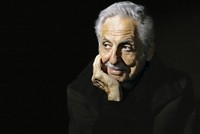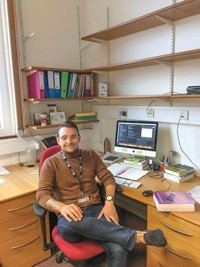Advertisement
Grab your lab coat. Let's get started
Welcome!
Welcome!
Create an account below to get 6 C&EN articles per month, receive newsletters and more - all free.
It seems this is your first time logging in online. Please enter the following information to continue.
As an ACS member you automatically get access to this site. All we need is few more details to create your reading experience.
Not you? Sign in with a different account.
Not you? Sign in with a different account.
ERROR 1
ERROR 1
ERROR 2
ERROR 2
ERROR 2
ERROR 2
ERROR 2
Password and Confirm password must match.
If you have an ACS member number, please enter it here so we can link this account to your membership. (optional)
ERROR 2
ACS values your privacy. By submitting your information, you are gaining access to C&EN and subscribing to our weekly newsletter. We use the information you provide to make your reading experience better, and we will never sell your data to third party members.
Business
Editorial: Inspiration for journalism from the cherry blossoms
by Nick Ishmael-Perkins
March 4, 2024
| A version of this story appeared in
Volume 102, Issue 7

Relocating from Europe to Washington, DC, has been instructive. The National Cherry Blossom Festival, for instance, has a backstory worthy of editorial reflection.
As spring approaches in the Northern Hemisphere, nearly 4,000 trees come into bloom across Washington. As only two varieties of cherry trees are dominant in the district, the timing of the blooms is fairly contained. This predictable spectacle is now the peak of the tourist season in the city—the population of the district more than doubles.
It turns out this is also a story of chemistry.
I have seen different versions of the origin story of these cherry trees. All acknowledge that most of the trees were a gift from Japan in March 1912. Some stories suggest that the travel writer Eliza Ruhamah Scidmore should be given the credit for the gift, as she lobbied to have cherry trees in the District of Columbia for 24 years. Other stories present the mayor of Tokyo at the time, Yukio Ozaki, as deserving most thanks. Some identify former first lady Helen Taft as the one who enabled the diplomatic overture. As a journalist, though, my instinct is to follow the money, and this leads us to the Japanese chemist Jokichi Takamine.
Takamine is perhaps best known for isolating the hormone adrenaline in 1901. Significantly, his success predates that accomplishment. Over a decade earlier, he had isolated the enzyme Taka-Diastase (named after him). In 1894, he patented the “Process of Making Diastatic Enzyme,” which was the first microbial enzyme to be patented in the US. He was no stranger to patents, having briefly run the patent office in Japan in the 1880s.
When Takamine opened a lab in New York, his commercial savvy led him to sell exclusive production rights for Taka-Diastase to Parke-Davis, now Pfizer. This made him a millionaire. So he had the means to support the cherry tree gift.
He also had the inclination, given his long-standing commitment to international cooperation. After studying in the UK, he had returned to Japan looking to apply lessons from the Industrial Revolution to R&D in the Japanese Ministry of Agriculture. Years later, Parke-Davis’s global sales network was reportedly part of what attracted him to the company.
So in 1910, Takamine committed to pay for at least 2,000 cherry trees. But when the first shipment arrived, the trees had an infestation of several pests, including the West Indian peach scale. The trees had to be destroyed.
Takamine, as a scientist and businessperson, was undeterred by failure and supported the delivery of a set of 3,020 additional trees. These new trees had been carefully engineered with grafting and disinfected soil.The modern chemistry enterprise can take much inspiration from Takamine’s story.
His awareness of his science’s commercial application, his commitment to international collaboration, and his approach to failure positioned him to be part of this enduring legacy.
There are lessons for C&EN too.
As in the case of the cherry trees, scientific endeavor takes an ensemble, each member playing their part. Journalists must be wary of the myth of the lone hero scientist. Also, who could have anticipated that the wealth derived from chemical patents and a love of cherry blossoms would have such an impact on the tourism sector in the US capital? Science journalists might not be able to predict discoveries’ downstream impact, but we should recognize there are stories and discussion to be had about consequences.
With my arrival at its helm, C&EN will continue to look to the people behind the science and reflect on the impact that lies beyond their work. You can expect us to seek out inspiration more globally. Above all, we will scour the fields of chemistry for stories both unexpected and enlightening, presenting them as robustly and delicately as we can.
Views expressed on this page are those of the author and not necessarily those of ACS.




Join the conversation
Contact the reporter
Submit a Letter to the Editor for publication
Engage with us on Twitter